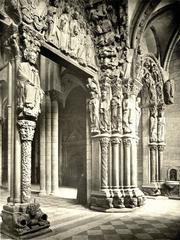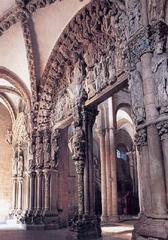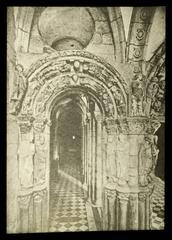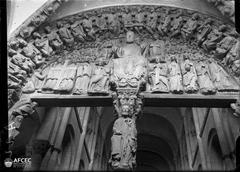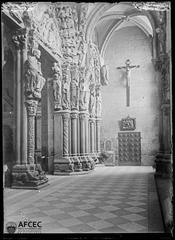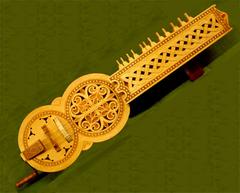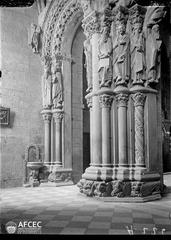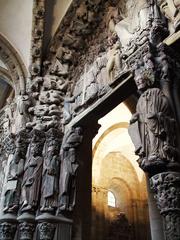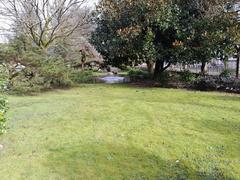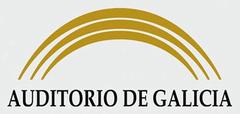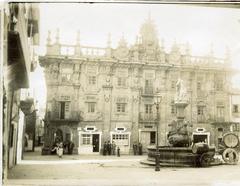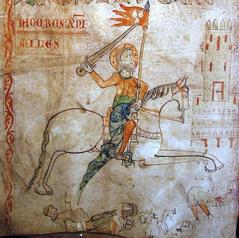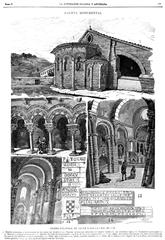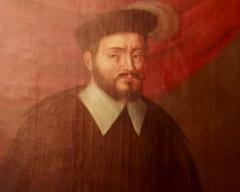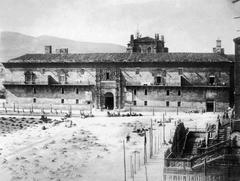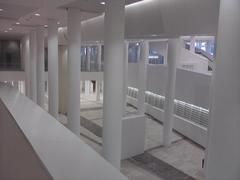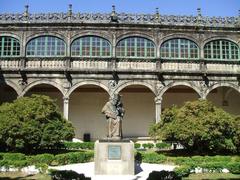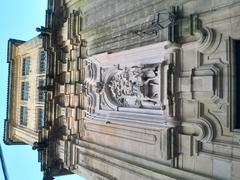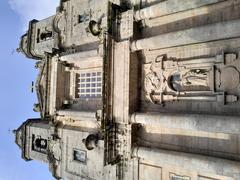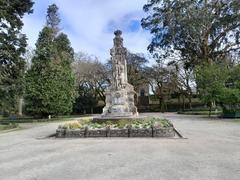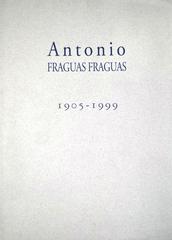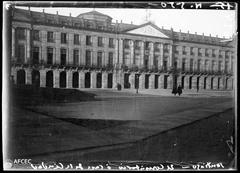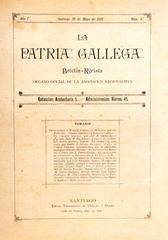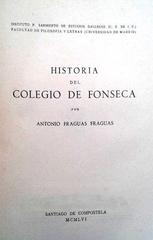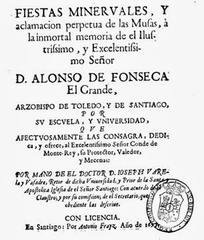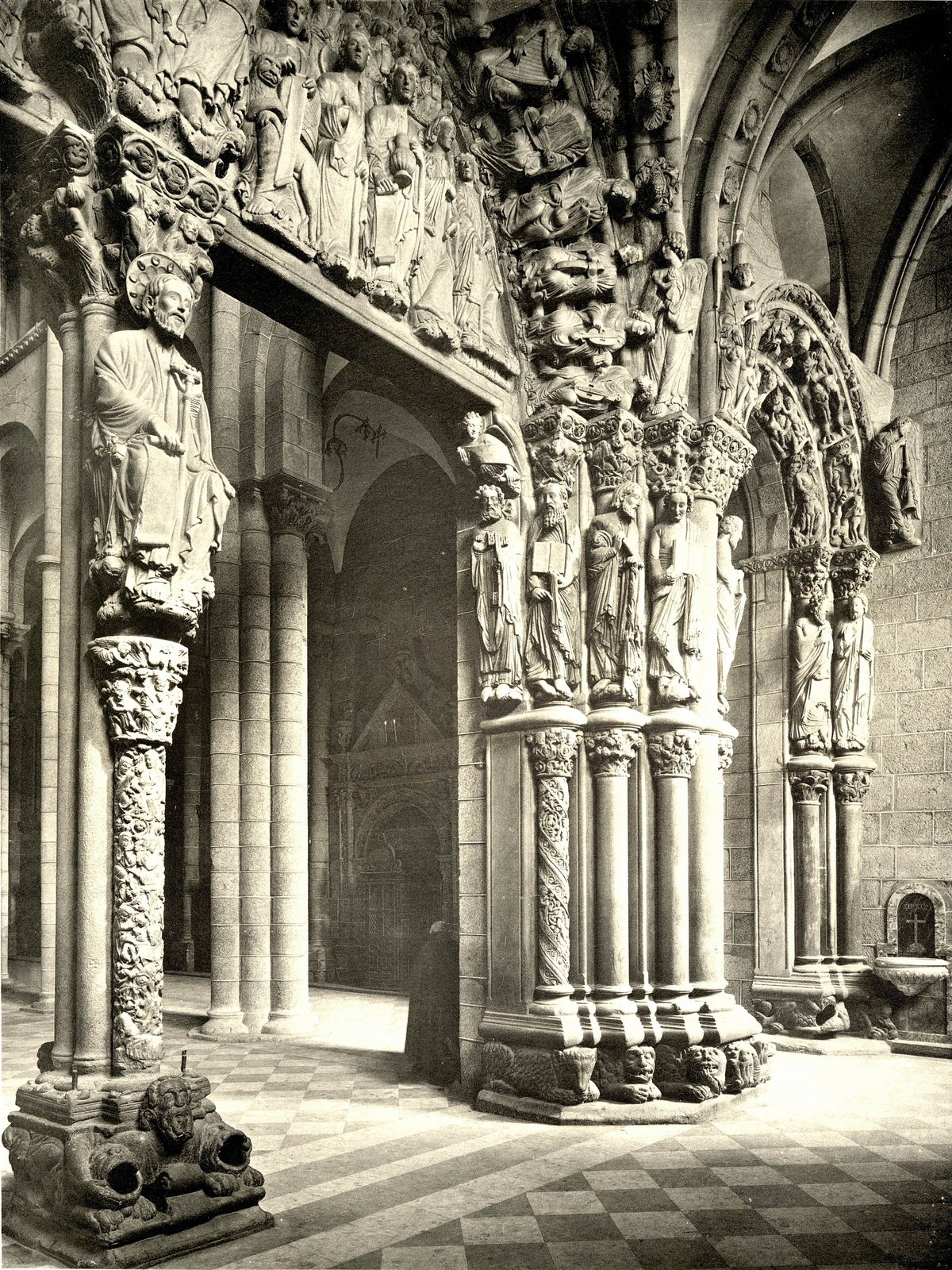
Visiting the Portico de la Gloria, Santiago de Compostela: Complete Guide to Tickets, Hours, and Visitor Tips
Date: 14/06/2025
Introduction: The Portico de la Gloria and Its Enduring Significance
Santiago de Compostela, in Galicia, Spain, is a city of profound spiritual and historical resonance, famed as the final destination of the Camino de Santiago pilgrimage. At the heart of this storied city lies the Cathedral of Santiago de Compostela, whose western entrance is adorned by the Portico de la Gloria (Pórtico de la Gloria)—a Romanesque masterpiece crafted by Master Mateo between 1168 and 1188. This monumental portal is not just an artistic marvel but a theological narrative in stone, reflecting the hopes, beliefs, and aspirations of countless medieval pilgrims.
The Portico’s intricately carved figures—over 200 in total—depict Christ in Majesty, apostles, prophets, and allegories of virtues and vices, serving as a visual catechism for the faithful. Its symbolism marks the transition from the secular to the sacred, and its legacy is closely tied to the enduring tradition of pilgrimage, earning it a place within Santiago’s UNESCO World Heritage center and recognition through the European Heritage Awards.
This comprehensive guide delves into the Portico’s history, iconography, and visitor logistics, equipping travelers, art enthusiasts, and pilgrims with the knowledge needed for a rewarding visit. For the latest updates and in-depth resources, consult official sites such as the Cathedral Foundation, Galicia Travels, and Catedral de Santiago.
Contents
- Introduction
- Historical Background and Pilgrimage
- Architectural and Artistic Overview
- Theological Symbolism and Religious Rituals
- Visiting Information: Hours, Tickets, and Accessibility
- Travel Tips and Nearby Attractions
- Frequently Asked Questions
- Summary & Recommendations
- Sources
Historical Background: From the Discovery of St. James to Pilgrimage Epicenter
The story of Santiago de Compostela begins in the 9th century, with the legendary discovery of St. James the Apostle’s remains—a finding that transformed Galicia into a spiritual beacon (walkthecamino.com). The city’s name derives from “Campus Stellae” (Field of the Star), referencing the miraculous light said to reveal the apostle’s tomb. This event catalyzed the establishment of the city and its cathedral, soon attracting Christian monarchs and devotees from across Europe (spain.info).
As the shrine’s fame grew, the Camino de Santiago pilgrimage routes emerged, converging on Santiago and making it one of Christendom’s three principal pilgrimage destinations, alongside Jerusalem and Rome (goaskalocal.com). By the 12th century, the city had become a melting pot of cultures, its Old Town evolving with the influx of peregrinos and the infrastructure supporting their journeys (caminosantiagocompostela.com).
The Portico de la Gloria: Architectural and Artistic Overview
Structure and Layout
The Portico de la Gloria forms the original western entrance of the cathedral, featuring a triple-arched composition in harmony with the cathedral’s three naves. The central arch, the largest, is flanked by two smaller arches, and supported by robust columns adorned with figures of apostles, prophets, and saints. The central mullion presents Saint James the Greater, patron of the cathedral and symbol of the pilgrimage’s goal (Catedral de Santiago; Google Arts & Culture).
Iconographic Program
The central tympanum depicts Christ in Majesty, surrounded by the four Evangelists and the 24 Elders of the Apocalypse, symbolizing the heavenly liturgy. The left arch features Old Testament prophets, while the right arch illustrates the Last Judgment, with Christ as judge and Saint Michael weighing souls. Master Mateo’s innovative approach is evident in the individualized expressions and gestures, foreshadowing Gothic sculpture (Wikipedia).
Artistic Techniques and Conservation
Carved from local granite and originally vividly polychromed, the portico’s surfaces retain traces of medieval and Baroque paint layers, revealed through recent restoration efforts. This craftsmanship and use of color mark the portico as a pivotal work in European Romanesque art, influencing later Gothic sculpture (Pilgern.ch; MSC-SAHC Blog).
Theological Symbolism and Pilgrim Rituals
The Portico de la Gloria serves as a visual catechism, communicating key Christian themes of salvation, judgment, and redemption. The central figure of Christ as judge, the elders playing heavenly music, and the figures of saints and prophets all contribute to a narrative of hope and spiritual fulfillment (Galicia Travels).
Historically, pilgrims would touch the central mullion—carved with the Tree of Jesse—seeking blessings, a tradition now restricted to aid conservation (V&A Blog). The portico remains a focal point during the Feast of Saint James and other major festivities, reinforcing its role as a spiritual and communal symbol.
Visiting the Portico de la Gloria: Hours, Tickets, and Accessibility
Location and Access
Situated beneath the Obradoiro façade at the cathedral’s western entrance, the Portico is accessed via the Crypt reception area at Plaza del Obradoiro (Museo Catedral de Santiago). The site is easily reached on foot from the city’s main transport hubs.
Visiting Hours
- Regular: Daily 10:00–20:00
- Night Visits: Special guided tours after hours (Night Visit Info)
- Closures: Possible during religious events or maintenance; ticket office closes 30 minutes before museum closure (Cathedral Visits)
Tickets and Entry
- Standard Admission: €12
- Reduced Admission: €10 for students, seniors, people with disabilities, pilgrims, and children under 12
- Free Admission: For priests, ICOM members, Friends of the Cathedral (with ID)
- Night Visits: €25 (guided)
- Full Cathedral Tours: From €39, including rooftops and portico (Galicia Experience)
Advance booking is strongly advised. Online purchase is available via the official website.
What’s Included
- Timed entry (max 25 minutes)
- Audioguides in Spanish, Galician, English
- Free access to the Cathedral Museum’s permanent collection, the crypt, Gelmírez Palace, MuSar, and Diocesan Museum within seven days of your visit
Regulations and Accessibility
- Security: No bags, umbrellas, or large items inside; no storage available
- Photography: Strictly prohibited inside the portico
- Food/Drink: Not allowed
- Assistance: The portico is generally wheelchair accessible; contact [email protected] or call +34 981 55 29 85 for specific needs
Travel Tips and Nearby Attractions
- Visit early or late: To avoid crowds, try morning or late afternoon slots
- No touching: Pilgrim rituals like touching the central mullion are no longer permitted
- Guidebooks: Available for purchase at the museum shop
- Tours: Audioguides and some tours are offered in multiple languages; confirm when booking
- Nearby: Explore the Gelmírez Palace, MuSar museum, Cathedral rooftops, and the vibrant Plaza del Obradoiro
Frequently Asked Questions
Q: What are the visiting hours?
A: Open daily 10:00–20:00; night visits by schedule.
Q: How do I get tickets?
A: Purchase online via the official website or at the on-site ticket office.
Q: Is the portico wheelchair accessible?
A: Yes, except during certain celebrations; contact staff for assistance.
Q: Can I take photos inside?
A: No, photography and filming are not allowed inside the portico.
Q: Are English-language guided tours available?
A: Yes, but check language availability when booking.
Visual Highlights
Alt text: The stone-carved entrance of the Pórtico de la Gloria at the Cathedral of Santiago de Compostela.
Alt text: Detailed Romanesque sculptures inside the Pórtico de la Gloria.
 Alt text: Restoration team working on unveiling original polychromy on the Portico of Glory.
Alt text: Restoration team working on unveiling original polychromy on the Portico of Glory.
Summary & Recommendations
The Portico de la Gloria stands as a testament to medieval artistry and spiritual devotion. Its intricate sculptures and theological narratives continue to inspire awe, while careful visitor management and conservation ensure its preservation for future generations. Plan ahead by booking tickets, reviewing regulations, and considering guided or audio-assisted tours for a deeper understanding.
Beyond the Portico, Santiago de Compostela offers a wealth of historic and cultural sites—making it a must-visit destination for pilgrims, art lovers, and history enthusiasts alike. Always consult official resources for the most current information.
Sources and Further Reading
- Santiago de Compostela: History, Pilgrimage, and Visitor Guide (walkthecamino.com)
- Spain.info: Santiago de Compostela Destination Guide
- European Heritage Awards: Portico de la Gloria
- V&A Blog: The Portico de la Gloria
- Catedral de Santiago Official Site
- Galicia Travels: Cathedral Portico de la Gloria
- Caminosantiago Compostela: Ultimate Visitor’s Guide
- Museo Catedral de Santiago Visitor Information
- Galicia Experience: Complete Cathedral Tour
- Pilgern.ch: Portico de la Gloria
